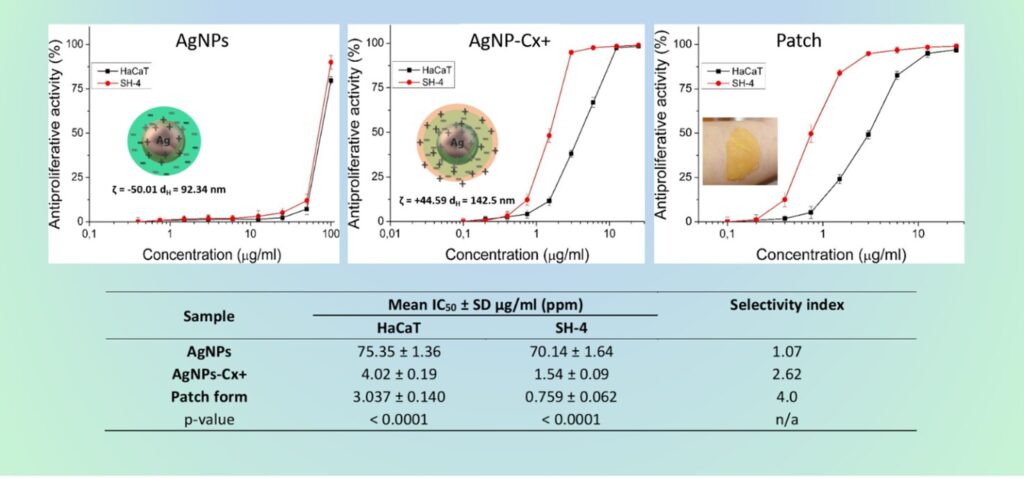Melanoma is a fast-progressing skin cancer characterized by a high mortality rate after metastasis. Local chemotherapy could be considered a therapeutic approach only in stage 0 of progression (in situ melanoma) and in the postoperative phase after surgical removal of suspected skin lesions. For this purpose, drugs such as Imiquimod, 5-Fluorouracil, Dacarbazine, and Doxorubicin have been tested and shown positive effects. Recently, metal nanoparticles as separate therapeutic units or drug carriers have also fallen into the research focus.
Silver nanoparticles (AgNPs), in particular, are widely recognized as multifunctional tools in nanomedicine, drug delivery, and theranostics. They exert wide-spectrum antimicrobial and anti-tumor properties but their pharmacological effects are in a tight bond with the so-called “surface functionality.” For example, negatively charged and spherical particles are proven less toxic than positively charged particles, especially irregularly shaped (e.g., rods, wires, etc.). Still, because of this, the former are less potent anti-cancer agents.
Contemporary pharmaceutical development relies very much on eco-friendly technologies (often referred to as “green” technologies) that avoid the use of toxic solvents and reagents. This research has implemented one such method based on Camellia sinensis (green tea leaves) as a natural reducer of silver ions.
To achieve enhanced antimicrobial and anti-tumor activity, the thus obtained AgNPs were further conjugated to chlorhexidine (Cx+)—a broad-spectrum antimicrobial agent and a cationic surfactant. Indeed, the AgNP-Cx+ complexes have shown highly increased antimicrobial properties, about 18-fold stronger anti-melanoma activity, and 3 times better tumor selectivity compared to the non-functionalized AgNPs.
The most valuable outcome of this new study, published in the journal Pharmacia, was the establishment of an adhesive patch prototype as a topical dosage form for the AgNP-Cx+ complex.
The used polymers, Hydroxypropyl methylcellulose and Eudragit RS, demonstrated a lack of negative interference with the antiproliferative action of the active agent but also ensured twice as high activity and even better selectivity against the tumor cells.


